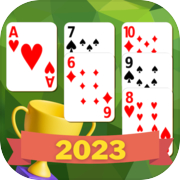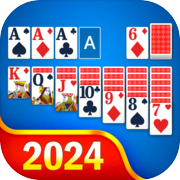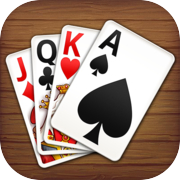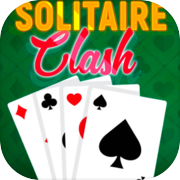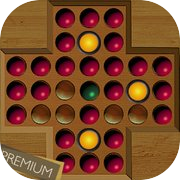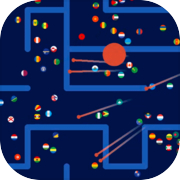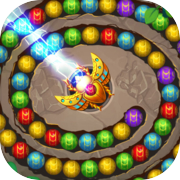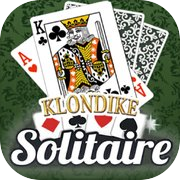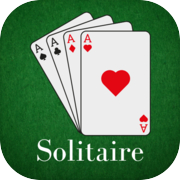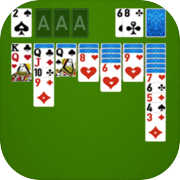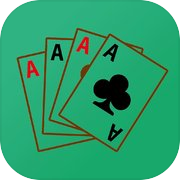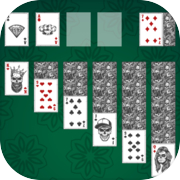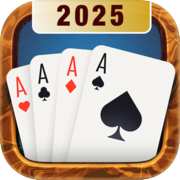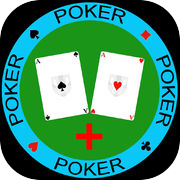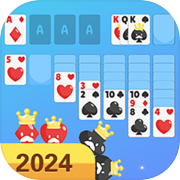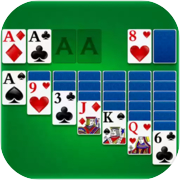Marble Peg Solitaire Classic 2

Peg solitaire, Solo Noble or simply Solitaire is a board game for one player involving the movement of pegs on a board with holes. Some sets use marbles on a board with indentations. The game is known as solitaire in Britain and peg solitaire in the US where 'solitaire' is now the common name for patience. It is also called Brainvita in India, The standard game fills the entire board with pegs except for the central hole. The objective is, to make valid moves, and to empty the whole board except for a solitary peg in the central hole.
Play A valid move is to jump a peg orthogonally over an adjacent peg into a hole two positions away and then remove the jumped peg. · indicates a peg in a hole, * emboldened indicates the peg to be moved, and o indicates an empty hole. A blue ¤ is the hole the current peg moved from; a red * is the final position of that peg, and a red o is the hole of the peg that was jumped and removed.
There are many different solutions to the standard problem, and one notation used to describe them assigns letters to the holes:
This mirror image notation is used, amongst other reasons, since on the European board, one set of alternative games is to start with a hole at some position and end with a single peg in its mirrored position. On the English board, the equivalent alternative games are to start with a hole and end with a peg at the same position.
There are, however, several other configurations where a single initial hole can be reduced to a single peg.
A tactic that can be used is to divide the board into packages of three and to purge (remove) them entirely using one extra peg, the catalyst, that jumps out and then jumps back again. In the example below, the * is the catalyst technique that can be used with a line of 3, a block of 2·3, and a 6-peg L shape with a base of length 3 and upright of length 4.
Other alternate games include starting with two empty holes and finishing with two pegs in those holes. Also starting with one hole here and ending with one peg there. On an English board, the hole can be anywhere and the final peg can only end up where multiples of three permit. Thus a hole at a can only leave a single peg at a, p, O, or C.
Studies on peg solitaire
A thorough analysis of the game is known. This analysis introduced a notion called pagoda function which is a strong tool to show the infeasibility of a given, generalized, peg solitaire, problem.
A solution for finding a pagoda function, which demonstrates the infeasibility of a given problem, is formulated as a linear programming problem and solvable in polynomial time.
A paper in 1990 dealt with the generalized Hi-Q problems which are equivalent to the peg solitaire problems and showed their NP-completeness.
A 1996 paper formulated a peg solitaire problem as a combinatorial optimization problem and discussed the properties of the feasible region called 'a solitaire cone'.
In 1999 peg solitaire was completely solved on a computer using an exhaustive search through all possible variants. It was achieved by making use of symmetries, efficient storage of board constellations, and hashing.
In 2001 an efficient method for solving peg solitaire problems was developed.
An unpublished study from 1989 on a generalized version of the game on the English board showed that each possible problem in the generalized game has 29 possible distinct solutions, excluding symmetries, as the English board contains 9 distinct 3×3 sub-squares. One consequence of this analysis is to put a lower bound on the size of possible "inverted position" problems, in which the cells initially occupied are left empty and vice versa. Any solution to such a problem must contain a minimum of 11 moves, irrespective of the exact details of the problem.
It can be proved using abstract algebra that there are only 5 fixed board positions where the game can successfully end with one peg
Play A valid move is to jump a peg orthogonally over an adjacent peg into a hole two positions away and then remove the jumped peg. · indicates a peg in a hole, * emboldened indicates the peg to be moved, and o indicates an empty hole. A blue ¤ is the hole the current peg moved from; a red * is the final position of that peg, and a red o is the hole of the peg that was jumped and removed.
There are many different solutions to the standard problem, and one notation used to describe them assigns letters to the holes:
This mirror image notation is used, amongst other reasons, since on the European board, one set of alternative games is to start with a hole at some position and end with a single peg in its mirrored position. On the English board, the equivalent alternative games are to start with a hole and end with a peg at the same position.
There are, however, several other configurations where a single initial hole can be reduced to a single peg.
A tactic that can be used is to divide the board into packages of three and to purge (remove) them entirely using one extra peg, the catalyst, that jumps out and then jumps back again. In the example below, the * is the catalyst technique that can be used with a line of 3, a block of 2·3, and a 6-peg L shape with a base of length 3 and upright of length 4.
Other alternate games include starting with two empty holes and finishing with two pegs in those holes. Also starting with one hole here and ending with one peg there. On an English board, the hole can be anywhere and the final peg can only end up where multiples of three permit. Thus a hole at a can only leave a single peg at a, p, O, or C.
Studies on peg solitaire
A thorough analysis of the game is known. This analysis introduced a notion called pagoda function which is a strong tool to show the infeasibility of a given, generalized, peg solitaire, problem.
A solution for finding a pagoda function, which demonstrates the infeasibility of a given problem, is formulated as a linear programming problem and solvable in polynomial time.
A paper in 1990 dealt with the generalized Hi-Q problems which are equivalent to the peg solitaire problems and showed their NP-completeness.
A 1996 paper formulated a peg solitaire problem as a combinatorial optimization problem and discussed the properties of the feasible region called 'a solitaire cone'.
In 1999 peg solitaire was completely solved on a computer using an exhaustive search through all possible variants. It was achieved by making use of symmetries, efficient storage of board constellations, and hashing.
In 2001 an efficient method for solving peg solitaire problems was developed.
An unpublished study from 1989 on a generalized version of the game on the English board showed that each possible problem in the generalized game has 29 possible distinct solutions, excluding symmetries, as the English board contains 9 distinct 3×3 sub-squares. One consequence of this analysis is to put a lower bound on the size of possible "inverted position" problems, in which the cells initially occupied are left empty and vice versa. Any solution to such a problem must contain a minimum of 11 moves, irrespective of the exact details of the problem.
It can be proved using abstract algebra that there are only 5 fixed board positions where the game can successfully end with one peg
Available on devices:
- Android
- Smart TV







